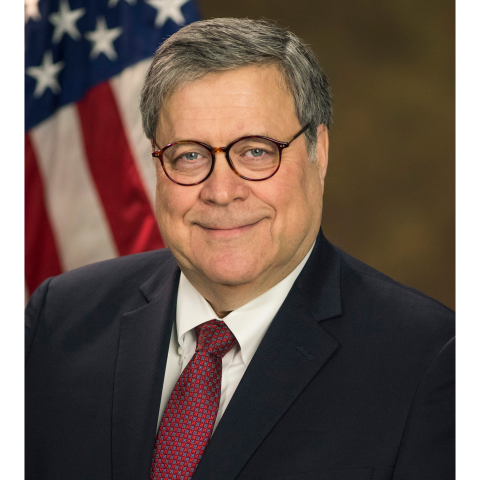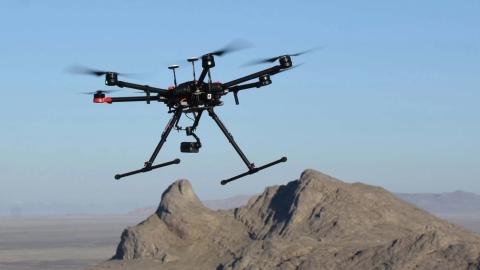The capabilities of drones are steadily advancing, rapidly increasing drones’ speed, range and payload.
Domestically, drone use is burgeoning both publicly and privately. The U.S. recreational and commercial drone fleet is expected to exceed 2 million by the end of 2024. Yet, just as the internet spawned the new threat of cyberattack, so too drones, while promising huge benefits, have the potential to inflict grave, even catastrophic, harm when used maliciously within the U.S.
The risk of kinetic attack is not the only danger, either. Malign actors can use drones to conduct surveillance, collect sensitive data, and engage in industrial espionage. In 2020, for example, there were reports of Chinese communist agents using drones to monitor critical U.S. industrial facilities. Even merely reckless operators can wreak havoc by flying unidentified drones into sensitive areas. Consider the 2018 incident at London’s Gatwick Airport, in which alleged drone sightings near the runway grounded flights for 36 hours, costing airlines over $60 million.
The appalling situation along our southern border shows the urgency of the threat and the inadequacy of our response. The drug war is becoming a drone war, and we are close to surrendering control of our airspace to Mexican cartels. Cartel drones are currently carrying out an aerial onslaught, ferrying drugs across the border and scouting U.S. border protection positions for reconnaissance.
Over the last year, the Border Patrol has faced over 10,000 drone incursions and 25,000 drone sightings in the Rio Grande Sector alone. Cartels are operating customized drones capable of ferrying over 20 pounds of cocaine, meth, or fentanyl over 60 miles. Emboldened by the weak American response, they have reportedly contracted with Mexican companies to produce faster drones capable of carrying up to 10 times that weight. Unbelievably, this spring the Biden administration canceled $5.3 million in funding allocated to develop the Border Patrol’s counter-drone capabilities. As one Border Patrol agent put it, “I see drones coming back and forth all the time, and I feel powerless.”
The problem with our inept response is not that we don’t have the technology — we do. Innovative American companies are constantly improving counter-drone technology. The first step in intercepting a malicious drone is to detect, track and identify it. Multiple approaches, augmented by artificial intelligence, can successfully perform this task, including radar, RF command signal detectors, sophisticated electro-optical and infrared cameras or acoustic listeners. The second step is to mitigate the threat, and there are again multiple options: jamming drones’ RF signals or GPS links, taking control of drones by feeding them spurious signals, or kinetically bringing drones down.
However, a maze of antiquated federal laws, meant to address other problems, have now unintentionally made the most effective means for drone detection and mitigation illegal. For example, intercepting a drone can run afoul of the Aircraft Sabotage Act, which prohibits damaging or disabling “any aircraft.” Additionally, some suggest that intercepting a drone could violate the pilot’s privacy by hacking into circuitry or by tracking the command signal. But this ignores the context and the fact that counter-drone activities can be consistent with the Fourth Amendment.
When defending against malicious drone activity, the rights primarily at stake are those of the people being surveilled or threatened by a drone using public airspace. Just as we submit to a search when entering a public event, piloting a drone in public airspace is subject to public safety regulations.
Furthermore, the Fourth Amendment embodies a rule of reason. Just as it does not prevent a Secret Service agent from tackling someone sprinting toward the president, it does not prohibit the TSA from engaging an unidentified drone hovering over an airport runway. Any Fourth Amendment concerns can be addressed, as they are now, in agency protocols tailored to specific situations and restrictions on any use and retention of communications to and from a drone that have been intercepted.
Hacking through this thicket will require Congress to expressly authorize counter-drone activities. Congress took a halting step forward in 2018 by temporarily authorizing DHS, DOJ, in addition to existing authorities for the Energy and Defense Departments to use counter-drone measures in a limited set of circumstances to protect the president, certain major federal facilities, and specific public events such as the Super Bowl. But even this overly-restricted authority expires next month.
Ultimately, Congress needs to act fast and take a more robust approach. At minimum, any legislation must grant more expansive permanent authority to appropriate federal entities; allow for the protection of a wider range of potential targets; and provide for the phased extension of authority to state and local law enforcement agencies.This does not mean that domestic counter-drone activity can be conducted haphazardly. However, Congress should not be superintending limited operational risks by micromanaging essential public safety resources. Executive branch agencies need a broad statutory framework with the flexibility to adapt to new technologies. But only Congress can give that authority, and it must do so before something worse happens.




















